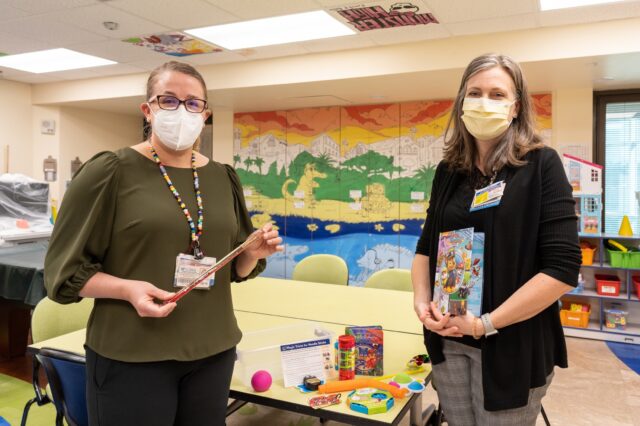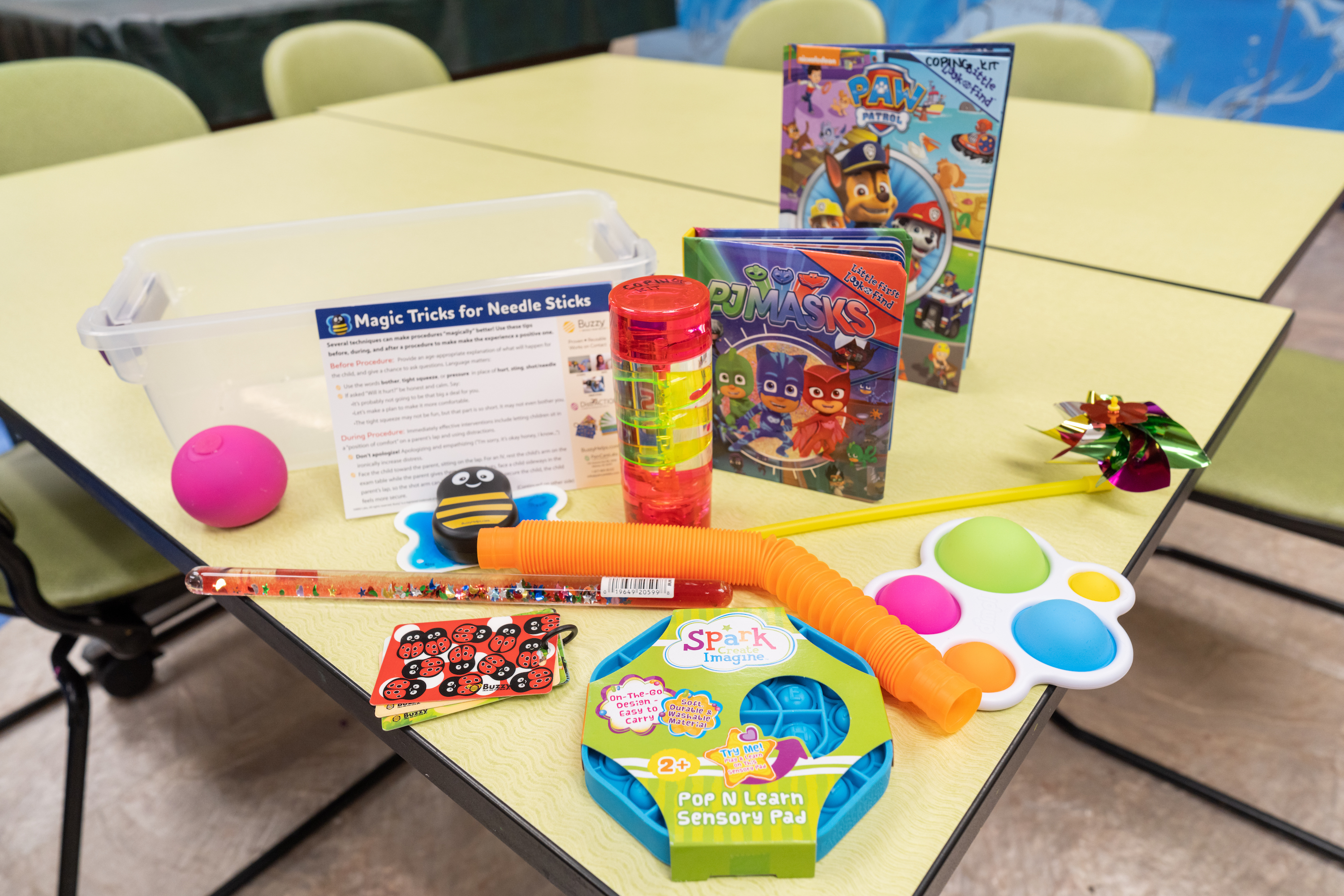Former UF Health patient creates ‘coping kits’ for pediatric blood draws

Blood draws can be scary for young children. As they sit in the hospital chair, their heart rate speeds up as the nurse walks by. Anxiety rises as the needle inches closer to their arm. Then it pierces their vein.
And they wait fearfully until the next time, to do it all over again.
After being diagnosed with Graves’ disease, one UF Health patient found herself stuck in this routine and decided it was time for a change. She came up with the idea of creating “coping kits” for pediatric patients just like her, and it wasn’t long until she had a team of pediatric residents backing her POP-Fear project: Phasing out Phlebotomy Fear.
 She chose to stay behind the scenes, but her mother, UF Health Shands Children’s Hospital pediatrician Dr. Nicole Paradise Black, MD, and other pediatric residents were eager to share.
She chose to stay behind the scenes, but her mother, UF Health Shands Children’s Hospital pediatrician Dr. Nicole Paradise Black, MD, and other pediatric residents were eager to share.
“Just a few simple things with how people talk to you and with having some distractions around; it really goes a long way with changing the overall experience,” Black said.
The coping kits offer a nonpharmaceutical intervention to distract children from the pain and anxiety associated with blood draws. The kits will be filled with toys such as spinning lights, squeeze balls and fidget items. They also will include vibrating devices that are placed right above the needle site to lessen the pain of blood draws.
Rachel Coombs, a child life specialist working with the inpatient phlebotomy team at UF Health Shands Children’s Hospital, said each child has different coping strategies when it comes to blood draws, which tend to distress younger children when proper relaxation techniques are not used, she said. Children ages 7 and up are more verbal and can express what they are comfortable with.
Overall, Coombs said, this project will improve the blood draw experience for UF Health pediatric patients.
“By providing the opportunity for atraumatic care, children are less likely to be distressed and anxious about medical procedures,” said Coombs. “In return, it can help reduce their fears about visiting doctors’ offices and the hospital.”
The department of pediatrics raised $1,000 through social media and $2,500 through the UF Medical Guild to fund the initiative. Samantha Cresoe, a pediatric resident at UF Health Shands Hospital and a member of the project team, said the next step is to start purchasing items and assembling the kits. The project was originally created just for outpatients coming in for blood draws, she said, but because the fundraising was so successful, it can now be expanded to inpatients as well.
There will be training sessions for the phlebotomist working with pediatric patients to coach them on how to best distract children. Educational handouts will be created for phlebotomists, patients and parents for tips and tricks on how to make the blood draw experience better overall.
“Having all of these toys, distraction items and techniques just makes the whole experience more comfortable for them,” Cresoe said. “They’re not leaving scared to come back.”